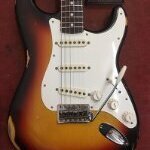Search the Community
Showing results for tags 'pelikan 120'.
-
Hi lovely people, Yesterday I have purchased a fountain pen, about which the seller didn't know to tell me much about. The only thing he knew was that supposedly was owned by his dad. I have asked him if he knows what was the production year, he said that he doesn't know, but that he things it...
- 6 replies
-
- pelikan 120
- authenticity
-
(and 2 more)
Tagged with:
-
The Pelikan 120 School Pen Background The Pelikan 120 name actually applies to two different pens. There is a Type I produced from 1955-1965 that served as Pelikan's first school pen. There is also a later Type II produced from 1973-1977 by Merz & Krell, with slight differences. The pen below is...
-
Greetings -- I have 2 Pelikan 120 pens bought in the late 1980s/early 1990s, sold with Pelikan medium Italic gold plated steel nibs. I stoned the original nibs into unusability in my attempt to create a glass smooth steel nib. This was in the days before micromesh. I replaced the original nib...
-
Greetings I have 2 Pelikan 120 pens bought in the late 1980s/early 1990s. They were my workhorse pens when i started my medical residency. I spent many sleepless hours writing admission notes and chart notes with them, until (as predicted by my colleagues who had a betting pool on when I'd give...












